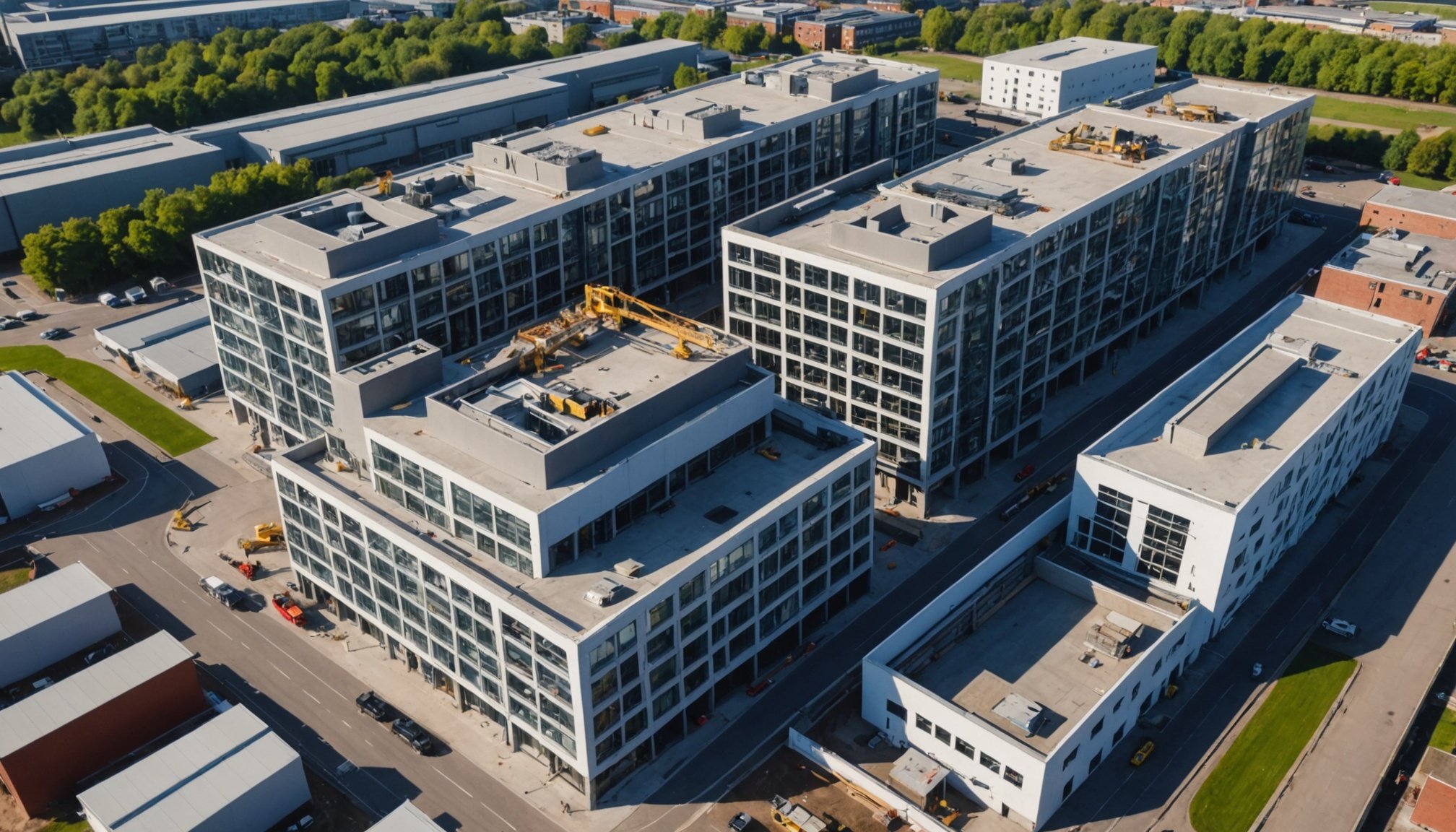Understanding BIM Technology in UK Construction
Building Information Modelling (BIM technology) has transformed the UK construction industry by providing a digital representation of the physical and functional characteristics of facilities. At its core, BIM technology enhances collaboration, communication, and efficiency across project lifecycles.
The key advantages of adopting BIM in the UK include improved visualisation and prediction of project outcomes, reduction in errors, and increased productivity. These benefits lead to better decision-making and more accurate cost estimation. By creating a unified platform for project stakeholders, BIM reduces duplications and misunderstandings, ultimately improving the quality and sustainability of construction projects.
This might interest you : Revolutionizing uk supply chains: effective approaches for sustainable integration practices
Despite these advantages, the current state of BIM adoption in the UK shows varying levels of integration across sectors. While some companies lead in sophisticated BIM use, others are yet to fully incorporate its potential due to factors such as cost, technical knowledge requirements, and scale of operations. Nevertheless, the government’s mandate for BIM Level 2 on public sector projects has accelerated its adoption, setting a precedent within the construction industry for a more connected and technologically advanced future.
Essential Tactics for Effective BIM Implementation
Implementing BIM effectively in the UK construction industry requires strategic planning and execution. The first critical step is to conduct a thorough assessment of current capabilities and identify gaps in resources and knowledge. This helps organisations recognise areas needing improvement before adopting more advanced BIM practices.
Also to read : Essential recovery tactics for uk travel agencies in a post-covid landscape
Developing a customised BIM execution plan tailored to the specific needs of a project is essential. This plan should outline objectives, procedures, and standards for managing information throughout the project lifecycle. Clear roles and responsibilities ensure everyone involved understands their part in the process, enhancing coordination and efficiency.
Another pivotal factor is training and skills development for staff. As BIM is technology-driven, providing ongoing training to improve technical skills is fundamental. This ensures the workforce remains adept at using BIM tools and techniques, leading to successful implementation and utilisation on projects. Emphasising collaboration is equally important, as it fosters a shared purpose among stakeholders, enhancing the overall project outcome. By strategically leveraging these elements, companies can better integrate BIM and realise its full potential within their operations.
Case Studies: Successful BIM Implementation in the UK
Evaluating successful BIM implementation through case studies offers valuable insights into best practices and outcomes. These examples illustrate the impact of tailored strategies in diverse project scenarios across the UK construction industry.
Case Study 1: Major Infrastructure Project
In this infrastructure endeavour, BIM was pivotal. A digital twin approach harmonised planning and execution, revealing project interdependencies early. Challenges included integrating legacy systems, effectively managed by using cloud-based data sharing. Outcomes? Remarkable accuracy in cost forecasting and a 20% reduction in construction phase delays, highlighting robust collaboration among stakeholders. Lessons underline the necessity of transparency and flexibility for optimal results.
Case Study 2: Residential Development
This project’s success hinged on adaptive BIM applications. Project teams adopted collaborative platforms, improving stakeholder engagement while reducing conflicts. Key to the positive impact was real-time data exchange, achieving a 15% cost saving and faster completion. The practice of sharing insights across teams fostered a unified approach and enhanced decision-making.
Case Study 3: Commercial Building Construction
Here, BIM fueled innovation by integrating IoT and AI, streamlining design and construction phases. Notably, incorporating sensors led to proactive issue resolution. Stakeholders praised the effectiveness of BIM, reporting significant improvements in spatial accuracy and environmental efficiency. The synergy of technology ensured seamless workflows and sustainable development.
Addressing Common Challenges in BIM Adoption
BIM adoption in the UK construction industry faces several hurdles. Identifying and managing resistance to change is crucial. Many companies experience hesitancy due to perceived complexity or fear of disrupting established processes. Overcoming this requires clear communication about the benefits of BIM technology, showcasing its potential to streamline operations and improve outcomes. Offering hands-on training and support can also alleviate anxiety and foster acceptance.
Another significant challenge is data integration and ensuring interoperability between disparate systems. Construction projects often involve various software, which must communicate seamlessly to maintain data accuracy. Utilising open standards and investing in compatible platforms can help address these integration issues.
Navigating regulatory compliance and meeting industry standards for BIM are also critical challenges. Ensuring adherence to established guidelines proves essential for successful implementation. Leveraging government resources and attending industry workshops can provide guidance on current standards and best practices. By tackling these common challenges head-on, the UK construction industry can harness the full potential of BIM, driving greater efficiency and innovation.
Enhancing Collaboration through BIM Technology
Building Information Modelling (BIM collaboration) is revolutionising construction teamwork by streamlining processes and enhancing communication. Effective collaboration begins with creating a collaborative culture among team members. Encouraging open dialogue and transparent communication fosters trust, enabling a seamless exchange of ideas and information.
Utilising the right tools and software is essential in supporting this collaborative environment. Platforms like Autodesk BIM 360 and Revit facilitate real-time data sharing, allowing teams to work on coordinated designs and minimise conflicts. By integrating these tools, teams can ensure that information flows smoothly across different project phases.
Stakeholder communication is critical in BIM-enhanced projects. Regular updates and meetings help keep everyone informed and engaged, aligning the project’s goals and expectations. Clear communication channels ensure that potential issues are addressed promptly, reducing the risk of costly missteps.
Adopting these techniques and tools not only optimises project efficiency but also nurtures a sense of shared purpose among all participants. This leads to improved project outcomes, as teams work cohesively to achieve common objectives. Ultimately, BIM technology paves the way for a more integrated and successful construction industry landscape.
Measuring ROI from BIM Implementation
Measuring return on investment (ROI) from BIM implementation is crucial for the UK construction industry to justify the integration of this technology. Key performance indicators (KPIs) like project completion time, cost savings, and error reduction provide insights into the success of BIM initiatives. These KPIs help quantify improvements and pinpoint efficiency gains directly linked to BIM use.
A thorough cost-benefit analysis is pivotal. It evaluates the financial impacts of adopting BIM by comparing costs associated with training, software, and initial setup against operational savings and enhanced project outcomes. Long-term financial benefits often manifest through decreased rework and maintenance costs, which contribute to greater sustainability for projects.
Additionally, implementing BIM offers benefits like resource optimisation and improved decision-making. As BIM facilitates better project visualisation, it reduces the likelihood of costly errors. This streamlined process leads to a lower carbon footprint and promotes sustainable construction practices. Assessing these factors over time allows firms to understand the broader impact of BIM on their financial portfolio and the environment, reinforcing BIM’s value in transforming the construction landscape.



